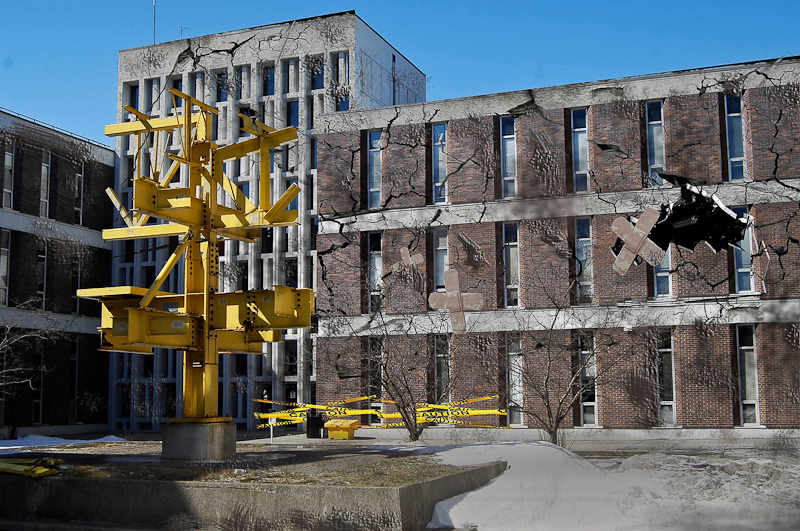Carleton’s campus is filled with buildings constructed in the 1960s and 1970s.
Now, these buildings, particularly Mackenzie Building and Loeb Building, are aging and will need renovations in order to remain functional for the next several decades.
The Charlatan spoke to Darryl Boyce, assistant vice-president (facilities, management and planning) about which buildings do and don’t need renovations, which ones receive the most complaints, and what is currently being done to maintain those buildings.
Buildings needing renovations
Boyce said five buildings are in need of renovations: Loeb Building, Mackenzie Building, Steacie Building, the Herzberg Building, and older parts of MacOdrum Library.
“Generally speaking, the systems and the finishes at these buildings are old,” he said. “The washrooms, generally, are worn out. The building systems are in need of renewal in terms of ventilation systems, electrical systems, information technology system, fire alarm systems, and roofing systems.”
Boyce said the age of some of the buildings are the root of maintenance problems.
“A lot of our campus is built in the sixties or seventies and that generation of buildings are in the most need at this time,” he said.
Complaints
Boyce said his department receives feedback from surveys that go out to faculty, staff, and students.
Older buildings received the most complaints, with the conditions of washrooms were specific areas mentioned most often.
“There is definitely a strong emphasis on washrooms and that’s why we’re trying to focus serious attention on that,” Boyce said.
Loeb, Paterson Hall, and Mackenzie received the most complaints, he said.
“We have the buildings assessed on a regular basis and try to develop plans to improve the conditions.”
Boyce said some complaints were “on things that are not easily resolved until you invest a significant amount of money in renewal.”
Buildings that don’t need renovations
Boyce said newer buildings such as the River Building, the Canal Building, and Human Computer Interaction Building are the best maintained.
“Pretty much every building built after 2000 is in good condition,” Boyce said.
He also said Tory Building, built in 1959 and redone in 2000, is not a concern.
What’s being done?
Boyce said Steacie is in its fourth phase of renewal, with improvements made to its exhaust system, undergraduate teaching labs, and electric distribution system. Construction cranes have been lifting ventilation equipment onto its roof throughout March.
“It’s a wet lab building and has a higher level of risk of the systems fail,” he said. “We’re increasing its capacity and making it safer in terms of proper distribution of exhaust outside of the building.”
Boyce said Mackenzie has not received any significant renovations in the past, while Loeb and parts of the library are currently being worked on.
Boyce said the first phase of moderate renewal has started in Loeb.
“The plan is to improve the air distribution system and lighting of the building and improve control of the ventilation system,” he said. “We hope will reduce energy consumption and improve the indoor environment for its occupants.”
Boyce said his department’s annual operating budget for preventive maintenance “is in the $1 million range and on average, per capita renewal . . . is three million.”
A proposal going to the Board of Governors in April will ask for $14 million a year for 10 years for capital investment, Boyce said.






